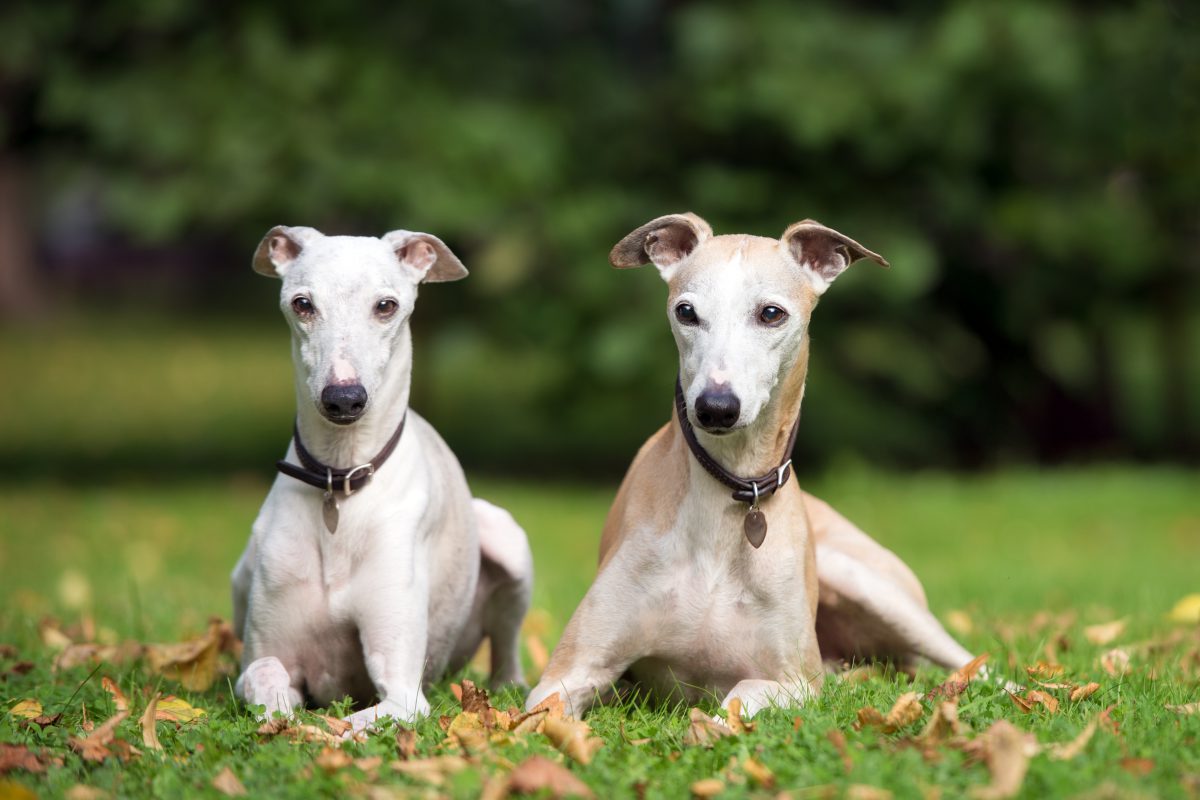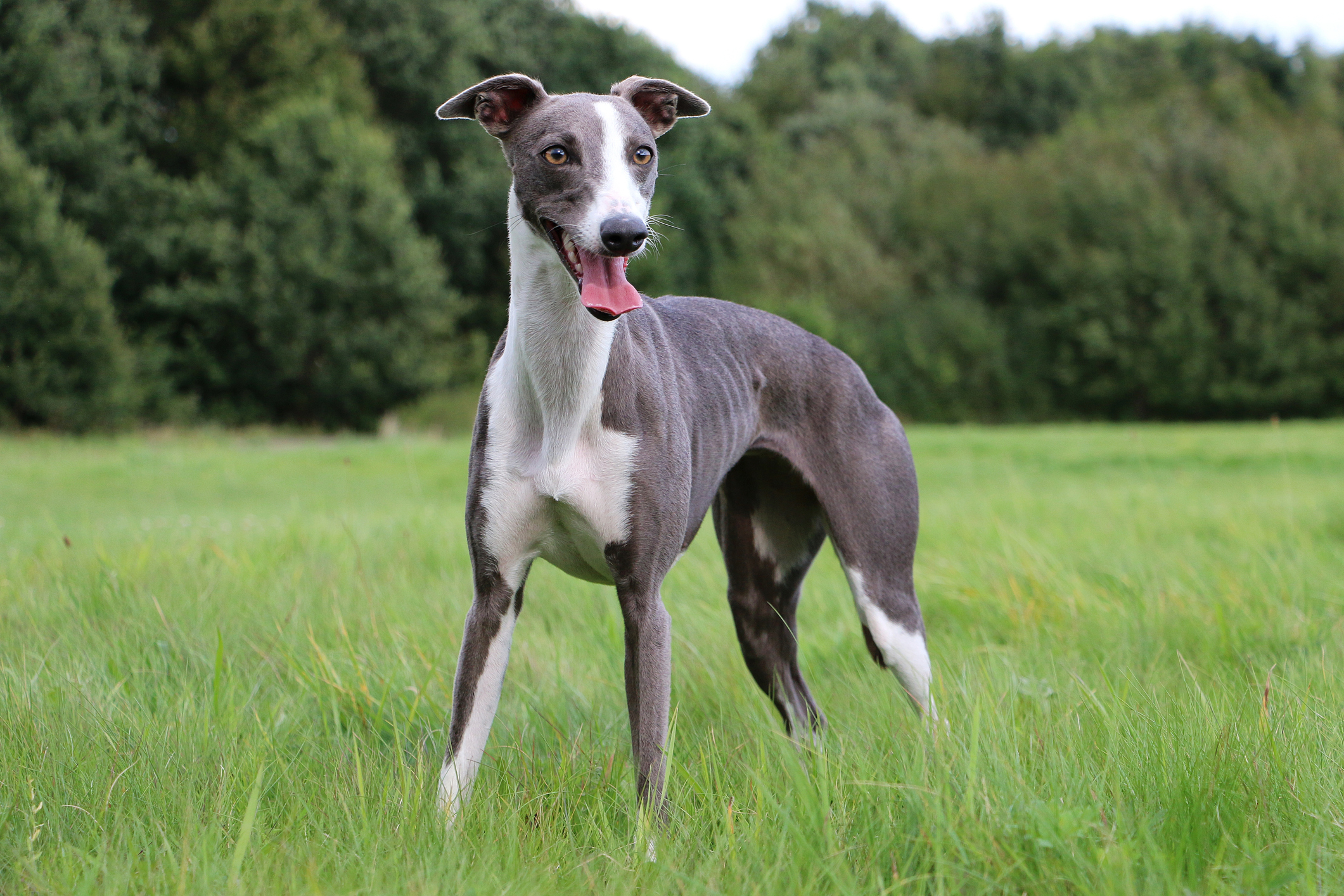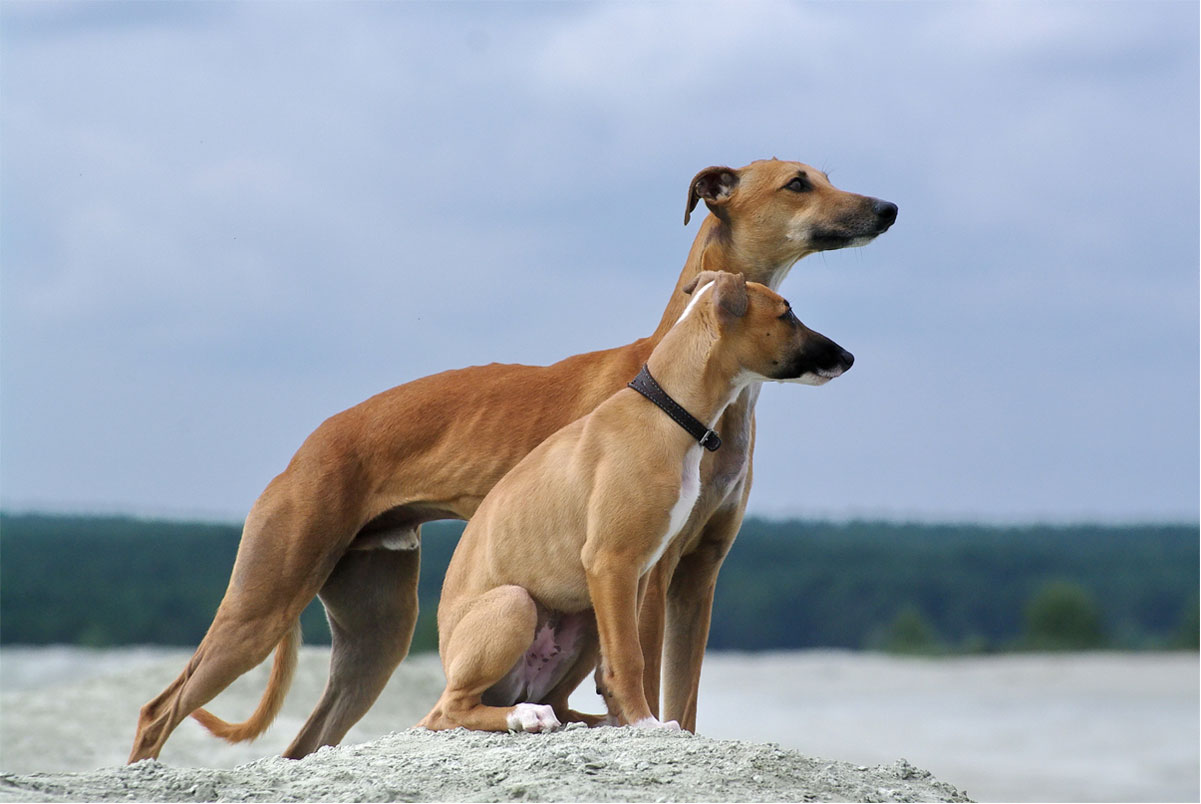
The Whippet, often described as a “poor man’s racehorse,” originated in England during the 18th and 19th centuries, particularly in the northern mining regions such as Yorkshire and Lancashire. It is believed that the Whippet descended from small Greyhounds, crossed with terriers and perhaps Italian Greyhounds to produce a smaller, faster, and more agile coursing hound.
Originally, Whippets were used for coursing small game such as rabbits and for a popular working-class sport called “snap dog” racing, where dogs chased a cloth lure over a short distance. With industrialization, Whippets transitioned smoothly into life as beloved companion dogs, cherished for their sweet disposition and athleticism.
The breed was recognized by The Kennel Club (UK) in 1891 and by the American Kennel Club in 1888.
Whippets have steadily gained popularity around the world for their unique blend of elegance and warmth. Known as “the poor man’s Greyhound,” they’ve carved out a niche both as show dogs, racing dogs, and family companions.
Their gentle nature, minimal grooming needs, and ability to thrive in both urban and rural environments make them highly desirable. Today, they are active participants in dog sports such as:
• Lure coursing
• Agility
• Obedience
• Therapy work
The Whippet is the epitome of streamlined grace and speed in a medium-sized package.
• Height: 18–22 inches (46–56 cm)
• Weight: 25–40 pounds (11–18 kg)
• Build: Lean, athletic, and aerodynamic with deep chest and narrow waist
• Coat: Short, fine, and smooth
• Color: Virtually any color or combination — brindle, solid, parti-color, fawn, black, blue, white, and more
• Head: Long and narrow with a slight stop
• Ears: Small, fine, rose-shaped
• Eyes: Large, expressive, dark
• Tail: Long, tapering, carried low
Whippets have a dual personality — lightning-fast sprinters outdoors and calm couch potatoes indoors.
• Gentle and affectionate: Deeply bonded to their families; love snuggling
• Quiet and unobtrusive: Rarely bark without reason
• Sensitive: Respond poorly to harsh training methods; thrive with kindness
• Playful and sociable: Enjoy interactive play and other dogs’ company
• Prey-driven: Strong instinct to chase moving objects; secure fencing required

This breed is ideal for:
• Families wanting a quiet, gentle, and affectionate dog
• Individuals seeking a low-shedding and clean companion
• Homes with a secure yard for sprints but a calm home life
• Those interested in dog sports like lure coursing
It may not suit:
• Owners seeking a guard dog or watchdog
• Families with small, free-roaming pets (due to prey drive)
• Homes where the dog would be left alone for long hours
Whippets are relatively low-maintenance but do require thoughtful care to meet their physical and emotional needs.
• Exercise: Moderate; daily walks and opportunities for safe sprints
• Training: Positive reinforcement works best; early socialization is vital
• Grooming: Minimal; occasional brushing and bathing as needed
• Living Environment: Best suited for indoor living; sensitive to cold, so warm bedding and jackets are necessary
• Feeding: Balanced diet appropriate for an active, medium-sized breed
Whippets are generally healthy and long-lived (12–15 years). Health issues to monitor include:
• Heart disease (mitral valve disease)
• Eye disorders (progressive retinal atrophy)
• Anesthesia sensitivity (common in sighthounds due to low body fat)
• Injuries from running (muscle pulls, skin tears)
Regular vet check-ups and thoughtful exercise management reduce risks.

• Greyhound: Larger, heavier, and more powerful sprinter
• Italian Greyhound: Smaller, more fragile, more prone to dental issues
• Saluki: Larger, feathered coat, more aloof temperament
If you seek a graceful, loving companion who will race like the wind and then curl up by your side, the Whippet is an exceptional choice.
Reputable breeders can be found through clubs such as the American Whippet Club. United Pet Club offers microchipping, exercise tracking, and travel passports to help active owners care for their Whippet on the go.